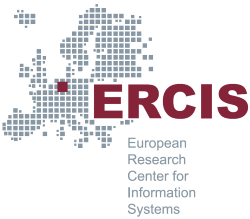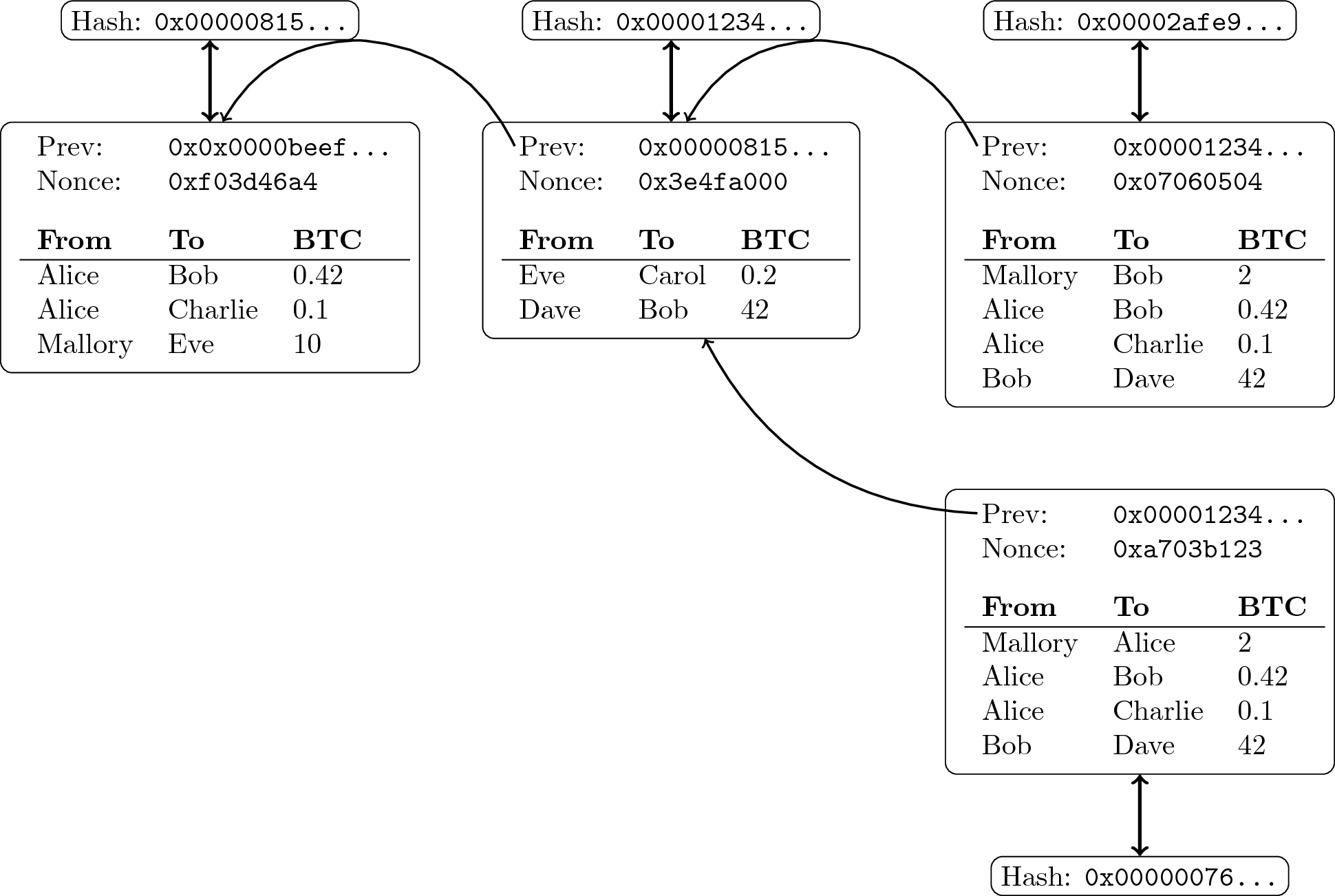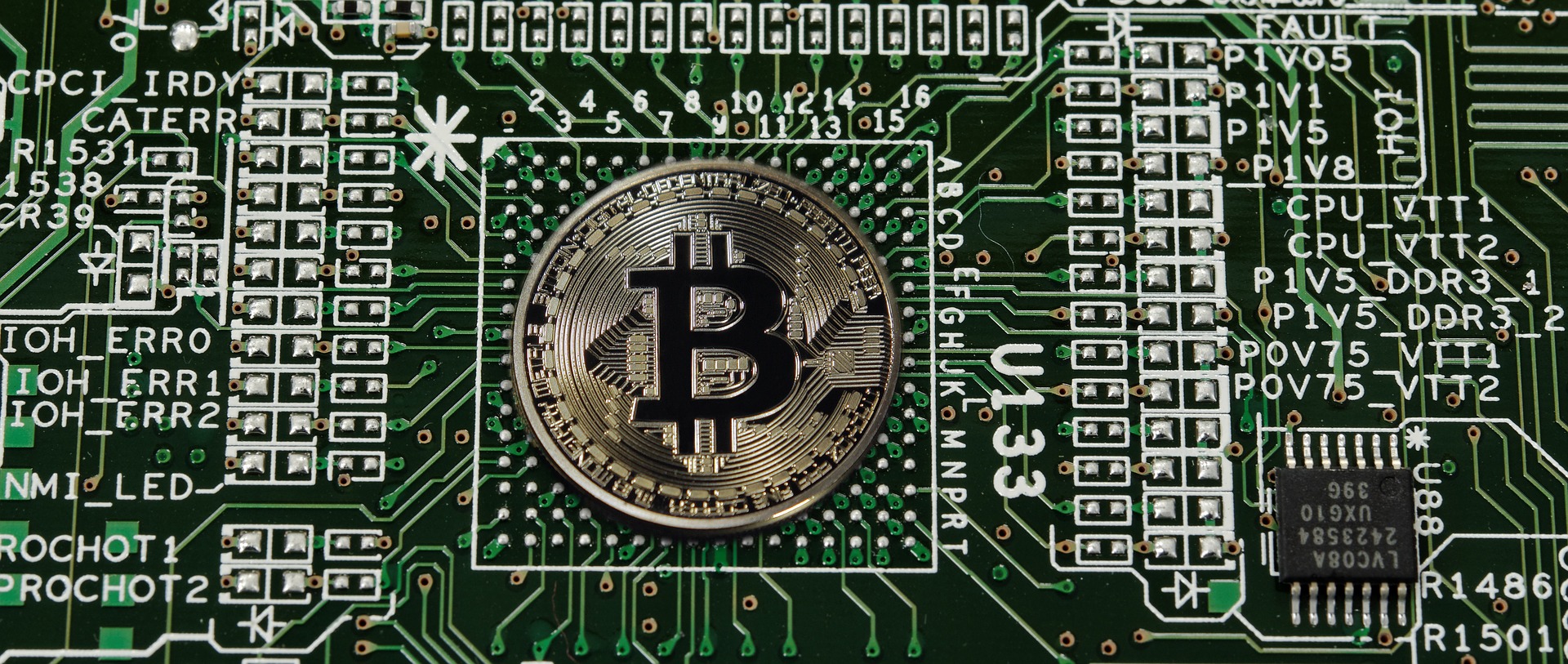

Blockchain, Consensus, and Databases
(Press ? for help, n and p for next and previous slide)
“When I use a word,” Humpty Dumpty said, in rather a scornful tone, “it means just what I choose it to mean—neither more nor less.”
“The question is,” said Alice, “whether you can make words mean so many different things.”
“The question is,” said Humpty Dumpty, “which is to be master—that’s all.”
Lewis Carroll, Through the Looking-Glass (1872), cited from Wikipedia
Agenda
1 Introduction
Last Week Tonight with John Oliver
March 2018, on crypto currencies: “Everything you don’t understand about money combined with everything you don’t understand about computers”
- (My addition: And everything you don’t understand about game theory)
Bitcoin’s Academic Pedigree
- Survey
[NC17] by Narayanan and Clark
- Nearly all technical components of bitcoin originated in academic literature (1980s, 1990s)
- Nakamoto stood on shoulders of giants
- Focus on “Nakamoto’s true leap of insight—the specific, complex way in which the underlying components are put together”
- Details far beyond this presentation!
Omissions
- Focus here on blockchains à la Bitcoin, i.e., public/permissionless with proof of work consensus
- Beyond that, see survey [DLZ+17]
- Ethereum, Parity, Hyperledger Fabric, private blockchains, proof of stake, PBFT, non-byzantine consensus variants, smart contracts, and more.
- “The results show that current blockchains’ performance is limited, far below what a state-of-the-art database system can offer.”
2 Terminology
Crypto Recap
- “Blockchain” uses standard cryptographic primitives
- Collision-resistant cryptographic hash function
- Map any data to “unique” hash value of fixed length, e.g., 256
bits in hexadecimal
0x420815abc...- Digital fingerprint, cryptographic digest
- Finding collisions must be computationally infeasible
- Map any data to “unique” hash value of fixed length, e.g., 256
bits in hexadecimal
- Digital signatures (asymmetric cryptography)
- Participants own key pairs: private and public key
- Alice creates signature on document with her private key
- Bob uses her public key to verify signature
- Proof that document (a) came from Alice (authentication, non-repudiation) and (b) unchanged by anybody else (integrity)
- Alice creates signature on document with her private key
- Participants own key pairs: private and public key
Key Pairs in Bitcoin
“Account” (part of wallet) tightly coupled with key pair
- Public key used like account number
- Transfer of bitcoins “to” public key
- Private key used to authenticate “transactions”
- Alice signs transfer of bitcoins from her account to Bob’s with her associated private key
- Everybody can verify that transfer with Alice’s public key
- (Whoever has access to the private key can transfer coins)
- (Remember Mt. Gox? 650,000 bitcoins “lost”)
- Public key used like account number
Hash Pointers
- If collision resistance is given, we can identify any data with
its hash value
- (If data changes, the hash value changes)
- E.g., data represents a block of transactions
- That block is stored at some address
- With hash pointers, we not only record the address but also the block’s hash value
When retrieving the block, verify that it is unchanged

“ Block of transactions with hash pointer ” by Jens Lechtenbörger under CC BY-SA 4.0; from GitLab
Chaining Data
- Append-only logs can be constructed by chaining blocks with hash
pointers
- Typically, blocks organized as Merkle trees
- Leaf nodes are transactions, internal nodes are hash pointers
- Hash of tree’s root serves as digest for block
- Inclusion proofs (of transactions) possible with little data
- Typically, blocks organized as Merkle trees

“ Block chain of transactions ” by Jens Lechtenbörger under CC BY-SA 4.0; from GitLab
Distributed Systems
Definitions:
A distributed system is …
- Leslie Lamport: “one in which the failure of a computer you didn’t even know existed can render your own computer unusable”
- Coulouris et al. [CDK+11]: “a system in which hardware and software components located at networked computers communicate and coordinate their actions only by passing messages”
(Distributed) Database
- Database system = DBMS + managed DBs
- DBMS = software offering user interface (query and manipulation) for concurrent access to data
- DB = collection of data managed by DBMS
- DB with flexible structures, not tied to one program
- Physical vs logical structures, data independence, integrity
- DB with flexible structures, not tied to one program
- Distributed DB (DDB) = collection of multiple, logically interrelated
DBs distributed over computer network
- Distributed DBMS (DDBMS) = software managing DDB with distribution transparency
(Based on: [OV11])
3 Consensus
Informal Statement
- Set of (distributed) processes need to agree on a value after some processes proposed values.
- E.g.:
- Who owns a lock?
- Who is the new master server after a crash of the old one?
- Who owns a particular Bitcoin?
Byzantine Generals
Famous consensus example: Byzantine generals problem by Lamport, Shostak, Pease (1982) [LSP82]
- Three or more, possibly treacherous, generals need to agree whether to attack or to retreat
- If not all parties reach the same decision (consensus), the attack fails
- Nowadays, “Byzantine failure” is a standard term
- Arbitrary failure/misbehavior (hardware, software, attacks)
Consensus
- Milestone results; \(N\) processes, \(f\) of them faulty
- ([PSL80], synchronous systems: solutions only if \(N \geq 3f + 1\).)
- [FLP83],[FLP85], asynchronous systems:
When \(f \geq 1\), consensus cannot be guaranteed.
- “Asynchronous” is typical assumption for the Internet
- [Lam98] (submitted 1990):
Paxos algorithm for consensus in asynchronous systems
- State machine replication
- Not guaranteed to terminate, makes use of persistent storage
- State machine replication
- [CL99]: PBFT with digital signatures, \(N \geq 3f + 1\)
- [Bur06]: Chubby service (locking, files, naming)
- Implementing Paxos at heart of Google’s infrastructure
4 The Blockchain?
Bitcoin as Origin for “Blockchain”?
Announcement of bitcoin as “P2P e-cash” on Cryptography Mailing List on 2008-10-31 by Satoshi Nakamoto
- Link to famous paper [Nak08]
- [Nak08] does neither mention “blockchain” nor “block chain” (but “chain” and “block”)
- Source code for bitcoin announced later on 2009-01-08
The Block Chain
- Comments in the source code of bitcoin mention “block chain”.
E.g.,
main.h#l1013// // The block chain is a tree shaped structure starting with the // genesis block at the root, with each block potentially having multiple // candidates to be the next block. pprev and pnext link a path through the // main/longest chain. A blockindex may have multiple pprev pointing back // to it, but pnext will only point forward to the longest branch, or will // be null if the block is not part of the longest chain. // class CBlockIndex
- Also for
CBlock,CWalletTx,CMerkleTx
Trees of Blocks
- The “chain” is expected to fork into branches
- A tree structure emerges
- The longest (actually, the most work-intensive) chain of that tree records “the truth” in Bitcoin

“ Block tree of transactions ” by Jens Lechtenbörger under CC BY-SA 4.0; from GitLab
The “Blockchain” in Bitcoin
- Tree-based data structure as just explained
- No database! (Thus, no distributed database either!)
- Replicated/copied among P2P network of miners
- Extended asynchronously
- After solving a cryptographic puzzle: Proof of work
- Different miners may work on different versions (forks, branches, orphans)
- Extended asynchronously
- Does each miner maintain “a blockchain”?
- Comment above suggests so
- Is the entire set of chains of blocks “the blockchain” (of bitcoin)?
5 Blockchain Characteristics
Distributed Ledger?
- What exactly is a “ledger”?
- Why invent a new term for a persistent, tamper-proof data structure?
- “Distributed” does not carry much defining value in blockchain contexts.
- E.g., Google’s infrastructure using Paxos (see above) is distributed, yet controlled centrally.
Decentralized, Public, Open, Replicated?
- No central control, no intermediaries/middlemen
- Anyone can take part
- Obtain copy
- Take part in maintenance/consensus
Reflection
- Who does take part in Bitcoin’s blockchain?
- Initially, anybody’s PC was good enough
- [SZ18] Then GPUs,
now millions of dollars for ASICs
- Barrier-to-entry
- But also barrier-to-exit
- Special-purpose hardware not much use for anything else
- [GBE+18] Analysis of 10 months of data, starting July 2016
- Weekly mining power of top Bitcoin miner about 20%
- (Ethereum: 25%)
- Top 4 Bitcoin miners have more than 53% of mining power
- (Top 3 with 61% in Ethereum)
- 90% of mining power controlled by 16 Bitcoin miners
- (11 in Ethereum)
- Weekly mining power of top Bitcoin miner about 20%
Immutable, Append-Only?
- Frequently, blockchains are called immutable
- Clearly, they are append-only at best
- Bitcoin only offers probabilistic guarantees
- Forks/orphans violate append-only property

“ Block tree of transactions ” by Jens Lechtenbörger under CC BY-SA 4.0; from GitLab
Designed to Persist?
- Bitcoin defines rules for mining
- E.g., mine on longest chain, publish mined blocks, include all known transactions
- Block rewards, transaction fees as incentives
- Rational miners may behave differently
- [ES14]: Selfish mining
- Technique to collect block rewards beyond expected share corresponding to mining power
- [CKW+16]: Rules change when block rewards are negligible and
transaction fees dominate
- Selfish mining even more profitable
- New undercutting attacks
- “At worst, consensus will break down due to block withholding or increasingly aggressive undercutting.”
- [ES14]: Selfish mining
Justifiable?
- Bitcoin is ecologically disastrous. I find its use unethical.
Digiconomist estimates energy consumption of 61 TWh per year (as of 2018-04-20).
- (They also cite other estimates of 18 and 23 TWh. Any number of TWh is too high.)
- (Estimate for Ethereum: 17 TWh)
- 952 KWh per transaction
- Do you know your household’s monthly energy usage?
- With rising bitcoin prices, miners invest more in energy …
6 Conclusions
Summary
- Blockchains aim for decentralized consensus over shared data
- No database per se, but building block
- The blockchain does not exist
- Advertised characteristics need to be analyzed carefully
- As usual, choice of terms is crucial
- Ask for meaning/definition
Constructive Thoughts
- Different (blockchain) scenarios come with different requirements
- Specify requirements first
- Select supporting technology afterwards
- E.g., a digital notary service based on linked timestamping (see [NC17]) or a distributed database with replication may be good enough
Effect of Signatures
- Digital signatures (even without blockchain) provide tamper-proof,
verifiable, decentralized evidence of statements/transactions.
- (If implemented properly based on strong crypto.)
- Transactions in Bitcoin cannot be revoked.
- Attempts of double-spending have no negative effect on attacker.
- Double-spending “resolved” at cost of randomly chosen victim.
- Although attacker’s account is publicly visible!
- Is that a requirement for your blockchain scenario as well?
- Attempts of double-spending have no negative effect on attacker.
Sample Application Scenarios
- Educational certificates on blockchains
- Different security needs than e-cash
- Must be revocable, e.g., to punish plagiarism
- Double-spending not an issue
- Little incentive for educational institutions to lie about previously issued certificates
- Different security needs than e-cash
- Other certifications, e.g., for real-estate may be embedded into
legal regulations
- Double spending leads attacker into jail
- Certificate Transparency
- Notary service without blockchain
- Append-only, open to public audits
Discussion
THE IS RESEARCH NETWORK
7 Backup
Making Sense
- In December 2017, soft-drink producer “Long Island Iced Tea Corp”
changed name to “Long Blockchain Corp”
- Stock shares “soared by almost 500pc on Thursday”
- (In April 2018, Nasdaq announced to delist them for low market capitalization)
Replication
- Standard scalability technique in distributed systems
- To replicate = to copy to multiple machines/nodes
- Copies (or nodes managing them) are called replicas
- Effects
- Increased availability
- System usable as long as “enough” replicas available
- Reduced latency
- Use local or nearby replica
- Increased throughput
- Distribute/balance load among replicas
- Increased availability
- Challenge: Keep replicas in sync (consistent)
- Consensus required
- To replicate = to copy to multiple machines/nodes
Replication in Bitcoin
- Non-standard use in Bitcoin
- Throughput guaranteed not to increase with more replicas
- Instead, “trust” may increase
- More replicas may lead to wider distribution of “the truth”
- More replicas may make a malicious majority more unlikely
- (Second major scalability technique, partitioning/sharding not used in Bitcoin)
Are Blockchains Secure?
- Information security is highly complex
- Security is always relative
- Need to define security goals, analyze risks and attackers
- Different blockchains may or may not care about, e.g., confidentiality, anonymity, pseudonymity, identity, and non-repudiation
- Besides, recall Edward Snowden: “Encryption works. Properly implemented strong crypto systems are one of the few things that you can rely on.”
- Properly implemented
- Hardware, firmware, software, people
- Just recall Meltdown/Spectre and Mt. Gox
- Properly implemented
- Need to specify security requirements for specific setting
- “The blockchain” is no silver bullet
- Security is always relative
Certificate Transparency
- Background
- TLS
certificates for any domain can be issued by any CA
- Various types of misuse in practice
- TLS
certificates for any domain can be issued by any CA
- Certificate Transparency
to the rescue
- Notary services for TLS certificates without blockchain but with
append-only log based on Merkle trees
- Each log run by independent party, open to submissions from
anyone, replicated and analyzed by “monitors”, which gossip
about consistency of their views
- TLS certificate augmented with signed certificate timestamp (SCT) from log server
- Allows check whether certificate included in log
- Browsers check log before certificate use
- No surreptitious certificate mis-issuance any longer
- Domain owners can check for “unauthorized” certificates, blame CA
- Each log run by independent party, open to submissions from
anyone, replicated and analyzed by “monitors”, which gossip
about consistency of their views
- Notary services for TLS certificates without blockchain but with
append-only log based on Merkle trees
Bibliography
- [NC17] Narayanan & Clark, Bitcoin's Academic Pedigree, Commun. ACM 60(12), 36-45 (2017). http://doi.acm.org/10.1145/3132259
- [DLZ+17] Dinh, Liu, Zhang, Chen, Ooi & Wang, Untangling Blockchain: A Data Processing View of Blockchain Systems, IEEE Transactions on Knowledge and Data Engineering (accepted for publication) , (2017). https://doi.org/10.1109/TKDE.2017.2781227
- [CDK+11] Coulouris, Dollimore, Kindberg & Blair, Distributed Systems: Concepts and Design, Addison-Wesley Publishing Company, 2011.
- [OV11] Özsu & Valduriez, Principles of Distributed Database Systems, Third Edition, Springer, 2011. https://doi.org/10.1007/978-1-4419-8834-8
- [LSP82] Lamport, Shostak & Pease, The Byzantine Generals Problem, ACM Trans. Program. Lang. Syst. 4(3), 382-401 (1982). http://doi.acm.org/10.1145/357172.357176
- [PSL80] Pease, Shostak & Lamport, Reaching Agreement in the Presence of Faults, J. ACM 27(2), 228-234 (1980). http://doi.acm.org/10.1145/322186.322188
- [FLP83] Fischer, Lynch & Paterson, Impossibility of Distributed Consensus with One Faulty Process, in: Proceedings of the 2Nd ACM SIGACT-SIGMOD Symposium on Principles of Database Systems, 1983. http://doi.acm.org/10.1145/588058.588060
- [FLP85] Fischer, Lynch & Paterson, Impossibility of Distributed Consensus with One Faulty Process, J. ACM 32(2), 374-382 (1985). http://doi.acm.org/10.1145/3149.214121
- [Lam98] Lamport, The Part-time Parliament, ACM Trans. Comput. Syst. 16(2), 133-169 (1998). http://doi.acm.org/10.1145/279227.279229
- [CL99] Castro & Liskov, Practical Byzantine Fault Tolerance, in: Proceedings of the Third Symposium on Operating Systems Design and Implementation, 1999.
- [Bur06] Burrows, The Chubby Lock Service for Loosely-coupled Distributed Systems, in: Proceedings of the 7th Symposium on Operating Systems Design and Implementation, 2006.
- [Nak08] Nakamoto, Bitcoin: A Peer-to-Peer Electronic Cash System, 2008. http://www.bitcoin.org/bitcoin.pdf
- [SZ18] Sompolinsky & Zohar, Bitcoin's underlying incentives, Commun. ACM 61(3), 46-53 (2018). http://doi.acm.org/10.1145/3152481
- [GBE+18] Gencer, Basu, Eyal, Renesse & Sirer, Decentralization in Bitcoin and Ethereum Networks, CoRR abs/1801.03998, (2018). http://arxiv.org/abs/1801.03998
- [ES14] Eyal & Sirer, Majority Is Not Enough: Bitcoin Mining Is Vulnerable, in: Financial Cryptography and Data Security, 2014.
- [CKW+16] Carlsten, Kalodner, Weinberg & Narayanan, On the Instability of Bitcoin Without the Block Reward, in: Proceedings of the 2016 ACM SIGSAC Conference on Computer and Communications Security, 2016. http://doi.acm.org/10.1145/2976749.2978408
License Information
Except where otherwise noted, this work, “Blockchain, Consensus, and Databases”, is © 2018 by Jens Lechtenbörger, published under the Creative Commons license CC BY-SA 4.0.
In particular, trademark rights are not licensed under this license. Thus, rights concerning third party logos (e.g., on the title slide) and other (trade-) marks (e.g., “Creative Commons” itself) remain with their respective holders.


